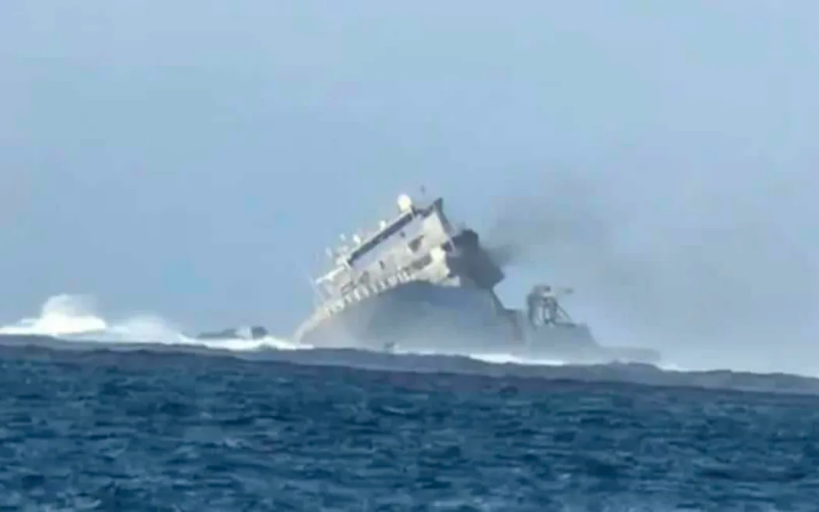
The New Zealand Defence Force ship which has sunk after hitting a reef in Samoa was in a "maintenance period" before being deployed, the navy says.
The 75 crew and passengers were rescued from the HMNZS Manawanui before it caught fire and sank on Sunday.
Chief of Navy, rear admiral Garin Golding, told Morning Report some 950 tonnes of diesel fuel were onboard the Manawanui when it sank. The fuel is a lighter oil which can partially evaporate, leaving short-chain hydrocarbons that are relatively less toxic.
Local conservationists want the wreck removed to preserve the delicate ecosystem in the area.
Sources had suggested to RNZ concerns had been raised about potential oil leakage from the ship's engine before it left.
Golding was asked to provide assurance the ship was fully operational, with no concerns about maintenance prior to leaving.
"The ship was in a maintenance period," he said. "It conducted that, they did trials post that maintenance period, and the ship was determined safe to deploy for their operation."
"As I said, the focus - rather than speculate - is to gather all the facts and the Court of Inquiry will get after that."
The Court of Inquiry is an investigative body rather than a court of law, and the Defence Force announced on Monday one was being set up to investigate the sinking.

It aims for "expeditious" fact-finding, and while it can lay blame, it cannot hand down punishments and other courts cannot use its findings as evidence.
Golding said some parts of the inquiry would likely be public but others - for example where commercially sensitive information was involved - would remain confidential.
"We're close to finalising that team and the terms of reference, and they'll get after their work very soon and they'll uncover all the facts and will be able to start providing some early insights into what's actually happened."
Prime Minister Christopher Luxon told Morning Report he had not been briefed on whether the vessel had been in a maintenance period.
"Look, I haven't - but I would just say to you the navy will not be sending ships out into the ocean that are not safe to travel and it's important that we don't jump to speculation or reckons, to be honest.
"I can tell you there's really good processes, the navy will be doing it well, the court of inquiry will establish what actually happened as well."

Luxon said the chief of navy would be better placed to answer maintenance questions and reiterated the importance of the survey work being done before the ship sunk.
"It was doing an important job of surveying an area of the island that actually hadn't been surveyed for some time, as I understand it. And that was important given we've got more boats and ships coming into Samoa."
The Defence Force confirmed the Manawanui was not covered by insurance, "as historically RNZN vessels are not insured due to the prohibitive cost. Even if purchased, policies are heavily limited by exclusions and conditions that apply to many activities our Navy operate in, such as shallow waters and cyclone responses".
RNZ has put further questions about the maintenance of the ship to the Defence Force, but it has not yet responded.













